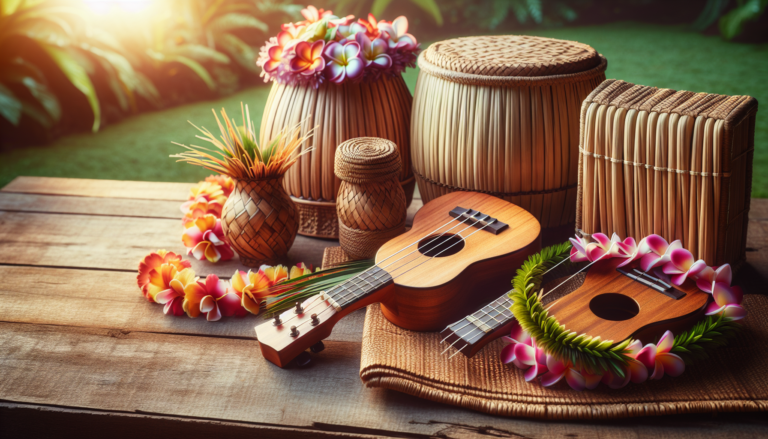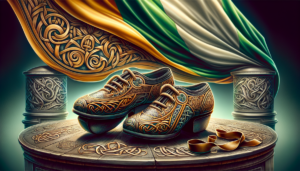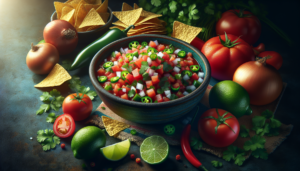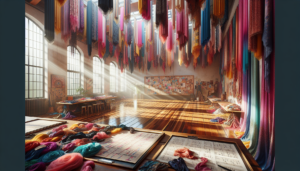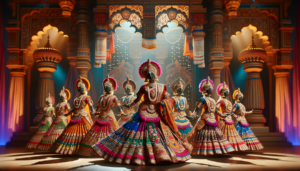The mesmerizing movements, vibrant costumes, and enchanting music of Hawaiian dance have captivated audiences worldwide. At the heart of this beautiful art form lies Hula, a storytelling dance deeply rooted in Hawaiian culture. Hula is more than just a dance; it is a living tradition that connects dancers to their ancestral knowledge, history, and the land itself.
Introduction to Hawaiian Dance
The Significance of Hula in Hawaiian Culture
Hula is a vital expression of Hawaiian culture, reflecting its traditions, stories, and values. It is a storytelling dance that allows dancers to share the history, legends, and emotions of their people. Through graceful movements, intricate footwork, and expressive gestures, Hula dancers convey the essence of Hawaiian culture.
Beyond its artistic beauty, Hula holds deep spiritual and cultural significance. It is a way for Hawaiians to connect with their ancestors, honor their gods, and celebrate the natural world around them. Hula is often performed at sacred ceremonies, festivals, and family gatherings, reinforcing the bonds within the community.
Historical Background of Hula
The origins of Hula can be traced back to ancient Hawaiʻi, where it was an integral part of religious rituals and storytelling. In the ancient Hawaiian religion, Hula was performed to honor the gods, particularly Laka, the goddess of Hula. The dance was also used to record and pass down history, genealogy, and cultural knowledge from generation to generation.
Over time, Hula evolved and adapted to the changing cultural landscape of Hawaiʻi. With the arrival of Western influences in the 19th century, new styles and interpretations of Hula emerged. However, the core values and traditions of Hula remained intact, ensuring its survival and continued significance in Hawaiian culture.
Types of Hula
Hula Kahiko: The Ancient Dance
Hula Kahiko, meaning “ancient Hula,” is the traditional form of Hula that embodies the dance’s spiritual and ceremonial roots. It is performed to chants, called oli, and percussion instruments, such as ipu (gourd drums) and pahu (sharkskin drums). The movements in Hula Kahiko are powerful and grounded, emphasizing the connection to the earth and the gods.
Dancers performing Hula Kahiko wear traditional attire, including pā’ū (skirts) made from bark cloth and adorned with natural materials like shells, leaves, and feathers. The adornments and colors used in the costumes hold symbolic meaning, representing the dancers’ connection to the land and their ancestral lineage.
Hula ʻAuana: The Modern Evolution
Hula ʻAuana, or modern Hula, emerged in the late 19th and early 20th centuries as Hawaiian music and dance adapted to Western influences. This style incorporates contemporary music, such as Hawaiian songs with English lyrics, and instruments like the guitar and ʻukulele. Hula ʻAuana is often more fluid and playful compared to the structured and ceremonial nature of Hula Kahiko.
In Hula ʻAuana, dancers wear more modern attire, such as colorful dresses or skirts and tops adorned with floral prints. The movements are often more graceful and flowing, emphasizing storytelling through the use of facial expressions and hand gestures. Hula ʻAuana has gained popularity beyond Hawaiʻi, showcasing the adaptability and appeal of Hawaiian dance to a global audience.
Learning and Performing Hula
The Role of Kumu Hula
Kumu Hula, or Hula teachers, play a vital role in preserving and passing on the art of Hula. They are respected cultural practitioners who have undergone extensive training and have a deep understanding of Hawaiian traditions. Kumu Hula not only teach the dance steps and techniques but also impart the cultural knowledge, values, and protocols associated with Hula.
Learning Hula under the guidance of a Kumu Hula is a transformative experience that goes beyond mastering the physical movements. Students are taught to embrace the spiritual and cultural aspects of Hula, developing a profound respect for the dance and its significance. Kumu Hula foster a sense of community and belonging among their students, creating a supportive environment for personal growth and cultural connection.
Hālau: The Hula Schools
Hālau, or Hula schools, are the centers of learning where students immerse themselves in the art and culture of Hula. These schools are led by Kumu Hula and provide a structured curriculum that encompasses dance techniques, oli (chanting), Hawaiian language, history, and cultural protocols. Hālau are not just places of instruction; they are communities where students form deep bonds and support each other in their Hula journey.
Joining a Hālau is a commitment to the perpetuation of Hawaiian culture and the preservation of Hula. Students dedicate countless hours to practicing, perfecting their craft, and preparing for performances. The discipline and dedication required in a Hālau setting instill values of perseverance, teamwork, and respect, which extend beyond the dance itself.
Cultural Significance and Traditions
The Use of Lei in Hula
Lei, the iconic garlands of flowers, leaves, and shells, are an integral part of Hula. Beyond their aesthetic beauty, lei hold deep cultural significance. They are used to adorn dancers, symbolizing their connection to nature and the spiritual realm. The type of lei worn often corresponds to the story or theme being portrayed in the dance.
The act of making and giving lei is a cherished tradition in Hawaiian culture. It is a way to express love, respect, and appreciation. In Hula, the exchange of lei between dancers and their Kumu Hula or the audience is a gesture of gratitude and honor. The fragrance and colors of the lei add an extra layer of sensory experience to the dance, enhancing its beauty and meaning.
Hula Performances at Lūʻau
Lūʻau, traditional Hawaiian feasts, often feature Hula performances as a centerpiece of the celebration. These performances showcase the beauty and cultural richness of Hawaiian dance to both locals and visitors. At a lūʻau, guests are treated to a mesmerizing display of Hula, accompanied by live Hawaiian music and surrounded by the warm hospitality of the Hawaiian people.
Hula performances at lūʻau range from traditional Hula Kahiko to the more contemporary Hula ʻAuana. The dancers, adorned in stunning costumes and lei, transport the audience to a world of storytelling and cultural expression. Through their graceful movements and heartfelt delivery, they share the stories, legends, and emotions of Hawaiʻi, creating an unforgettable experience for all who witness it.
Hula and the Environment
Connection to the Land and Nature
Hula is deeply intertwined with the Hawaiian relationship to the land and nature. The dance is a way for Hawaiians to express their love, respect, and stewardship for the environment. Many Hula dances tell stories of the natural world, honoring the beauty and power of the islands’ landscapes, plants, and animals.
The movements in Hula often mimic the elements of nature, such as the swaying of palm trees, the flow of ocean waves, or the eruption of volcanoes. By embodying these natural phenomena through dance, Hula dancers establish a profound connection with the environment. They become vessels for the mana (spiritual energy) of the land, expressing gratitude and reverence for the natural world that sustains them.
Significant Locations in Hula
Certain locations in Hawaiʻi hold special significance in the context of Hula. These places are often referenced in Hula chants and dances, serving as powerful symbols of cultural identity and connection to the land. For example, Maunakea, a sacred mountain on the island of Hawaiʻi, is frequently mentioned in Hula, representing the spiritual connection between the heavens and the earth.
Other significant locations include Kīlauea, an active volcano that symbolizes the creative and destructive forces of nature, and Lydgate Beach on the island of Kauaʻi, a tranquil spot where Hula performances and ceremonies take place. By incorporating these places into Hula, dancers pay homage to the land, acknowledging its role in shaping Hawaiian culture and identity.
Modern Influence and Global Reach
Hula in Contemporary Media
In recent years, Hula has gained increased visibility in contemporary media, showcasing its enduring appeal and adaptability. From featured performances in movies and television shows to viral videos on social media platforms, Hula has captivated audiences worldwide. These modern representations of Hula have introduced the dance to new generations and sparked a global interest in Hawaiian culture.
However, it is important to approach these contemporary portrayals of Hula with cultural sensitivity and respect. While they can serve as gateways to appreciating Hawaiian dance, it is crucial to understand and honor the deeper cultural significance behind Hula. By engaging with Hula through the lens of cultural appreciation rather than appropriation, viewers can gain a genuine understanding of the dance’s roots and meaning.
Hula’s Global Influence
The beauty and universal appeal of Hula have allowed it to transcend borders and captivate audiences around the world. Hula has been embraced by communities far beyond the shores of Hawaiʻi, with Hula schools and groups emerging in various countries. This global influence has created a network of Hula practitioners who share a passion for the dance and a desire to connect with Hawaiian culture.
The spread of Hula worldwide has also fostered cultural exchange and understanding. As people from different backgrounds learn and perform Hula, they gain a deeper appreciation for Hawaiian values, traditions, and history. This exchange promotes cross-cultural dialogue, respect, and the preservation of indigenous art forms. Hula’s global reach serves as a testament to the power of dance to unite people and bridge cultures.
Conclusion
The Living Tradition of Hula
Hula is a living tradition that continues to evolve and adapt while remaining rooted in its ancient origins. It is a testament to the resilience and vitality of Hawaiian culture, which has endured through centuries of change. As new generations of dancers learn and embrace Hula, they contribute to its ongoing story, adding their own unique voices and interpretations to this timeless art form.
The practice of Hula is not only about mastering the physical movements; it is a journey of cultural discovery, personal growth, and connection to one’s heritage. Through Hula, dancers cultivate a deep sense of pride, respect, and responsibility for the preservation of Hawaiian culture. They become stewards of this ancient tradition, ensuring that it thrives and continues to inspire future generations.
Preserving and Celebrating Hula
Preserving and celebrating Hula is crucial for the survival and vibrancy of Hawaiian culture. It requires a collective effort from the Hawaiian community, cultural practitioners, and supporters worldwide. By nurturing the next generation of Hula dancers, providing opportunities for cultural education, and promoting the authentic representation of Hula, we can ensure that this beautiful art form continues to flourish.
Celebrating Hula also involves recognizing and honoring the cultural context in which it exists. It means respecting the sacred spaces, traditions, and protocols associated with the dance. By approaching Hula with reverence and a willingness to learn, we can deepen our appreciation for its cultural significance and contribute to its preservation for generations to come.
Hula is more than just a dance; it is a living embodiment of Hawaiian history, values, and spirituality. Through its graceful movements, rich symbolism, and deep cultural roots, Hula tells the story of a people and their profound connection to the land and each other. As we embrace and celebrate this beautiful art form, we not only pay tribute to the past but also ensure a vibrant future for Hawaiian culture.

